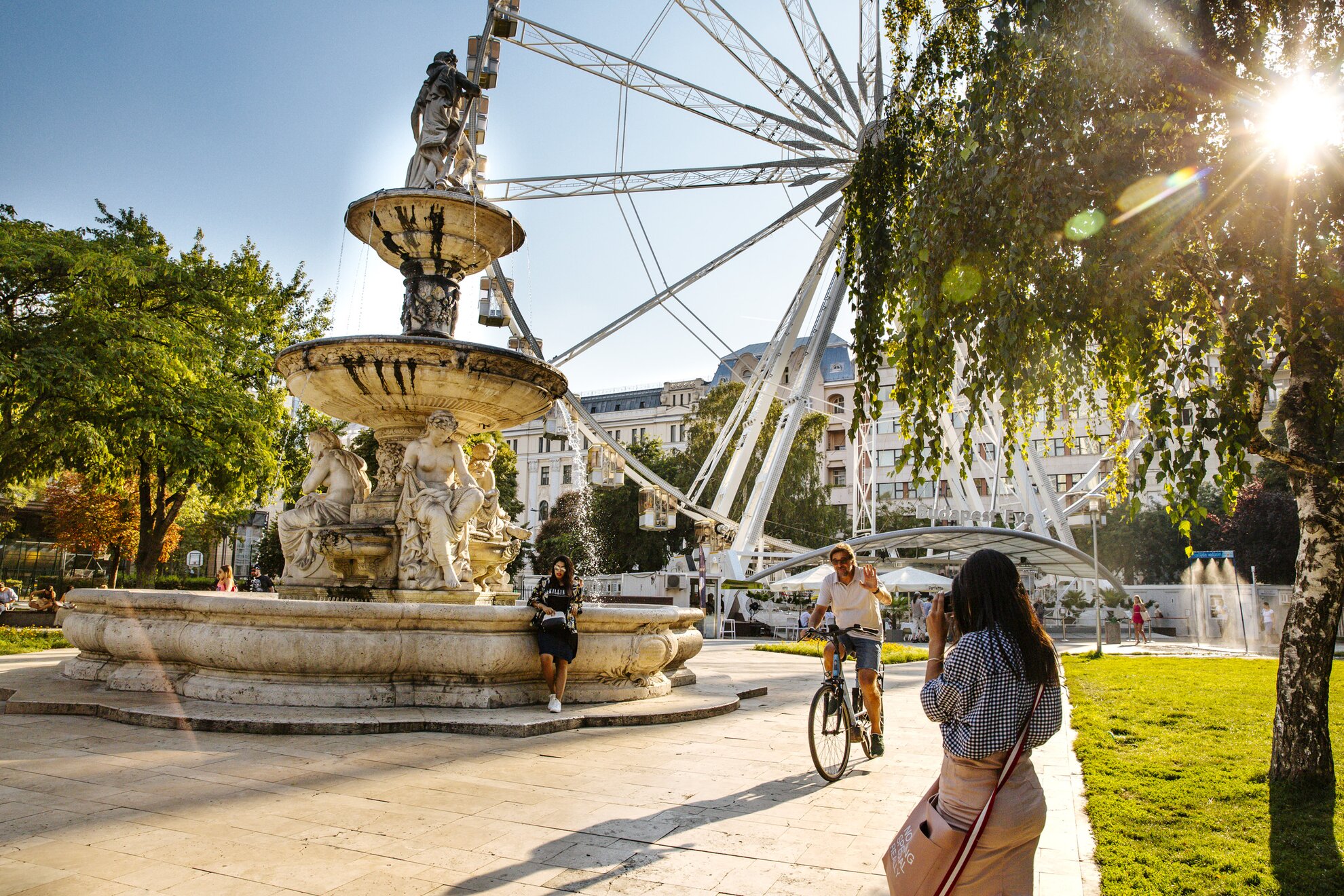As Budapest comes back to life, so the city’s main outdoor hangout space, Erzsébet tér, is filling with wine-sippers and picnickers. It wasn’t always this way, however – the former Sztálin tér has performed many functions.
The history of Erzsébet tér goes back to the 17th century, when it was a cemetery, then later converted to a marketplace. Only in 1854 did preparations begin to turn it into a park, when thousands of saplings were planted. In 1872, the square was surrounded by an iron fence. This was the first public square to be named after Hungarophile Habsburg Empress Elisabeth, Erzsébet in Hungarian.
With its trees providing shade and colourful flowerbeds, this was the city’s number one promenade spot in the second half of the 19th century: the temporary building of the German theatre, as well as the small confectionery kiosk, enticed plenty of visitors. The theatre burned down in 1847, and by 1870, the Neo-Renaissance Kioszk was put up in its place with a café on the ground floor, almost exactly where the Budapest Big Wheel can be found today.
It was converted into an Art Nouveau building in 1907, to provide space for the National Salon, hosting exhibitions by the association of Hungarian artists and art patrons. The renovations caused a backlash – the original Neo-Renaissance façade facing Erzsébet tér became the back side of the building with its windows sealed off, and the Salon had to be entered from Bécsi utca. Several eateries welcomed guests on the Erzsébet tér side, including one of the most popular milk bars in town. A cinema also functioned on its premises after World War II, but was demolished together with the National Salon in 1960.
On the site of today’s Akvárium Klub, the second tallest apartment block in Pest once stood, Kemnitzer House, also known as the Moroccan Courtyard after its Eastern features and carved figures wearing turbans. The building stayed in place until 1950, when it was replaced by a car park and bus station.

Between 1949 and 2001, this was the largest bus terminal in the country but as more and more stations appeared elsewhere in town, it gradually lost its function. The station building remained however, as it had been designated as a protected historical monument. It first housed the Design Terminal, and is now home to the Fröccsterasz (‘Spritzer Terrace’), busy indoor and out.

The intricate history of the square also includes the long and torturous saga of the National Theatre, which was forced to leave its original location on Blaha Lujza tér in the mid-1960s. For decades, the theatre operated at temporary locations.
In 1989, a tender was put out, calling for the construction of a theatre building on Erzsébet tér, but it wasn’t acted upon.
Another tender was issued in 1996, and construction actually starting two years later – but were halted that same year due to a lack of resources. The yawning gap, the Nemzeti Gödör (‘National Pit’), created by the first phase of the failed operation, was later occupied by the Gödör cultural centre. This became an instant hit and the number one events space in town. In 2012, the Gödör moved to neighbouring Király utca, while Erzsébet tér remains a must on any night out thanks to the Akvárium Klub.
In hindsight, the fact that the National Theatre was established in District IX by the Danube was probably a good thing, as now everyone can enjoy a large green space in the centre of Budapest, with occasional open-air dancing lessons in the summer. The park was renovated in 2006 with contemporary architectural methods, using granite, gravel and decked flooring.

A busy flow of traffic passing by the square every day, but it also retains its outstanding recreational qualities. There’s a renovated playground, a court for basketball and mini-football, as well as a track for skateboarding.
One of the strangest memorials in the city, the Michael Jackson Tree, also stands here, in memory of when the pop star stayed at the nearby Kempinski Hotel when playing a show here in 1996.

And, of course, there’s the Budapest Big Wheel, dominating the skyline of central Budapest since being moved here from its temporary location at the annual Sziget Festival.




